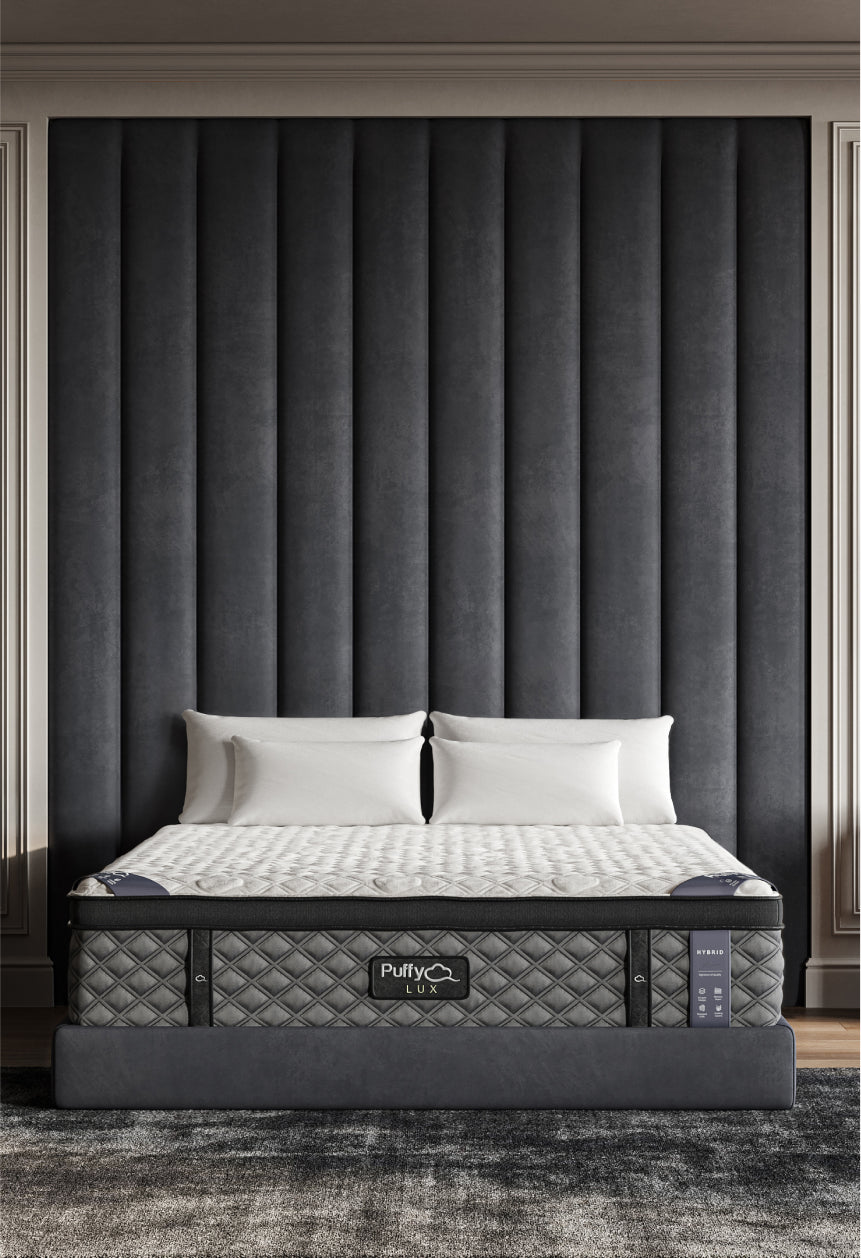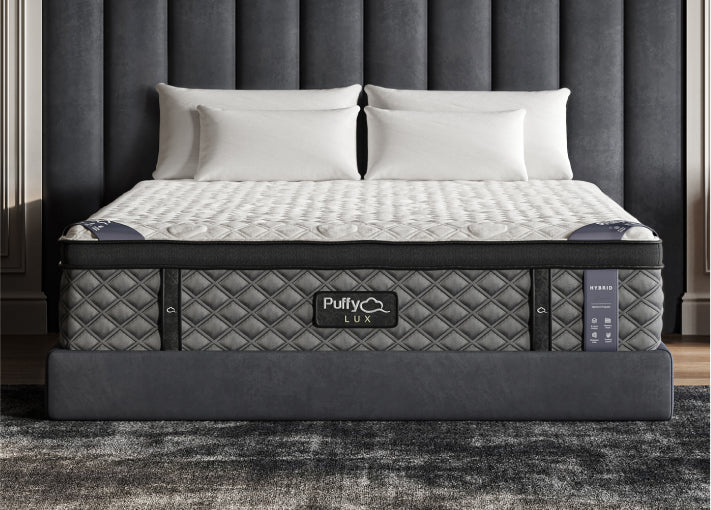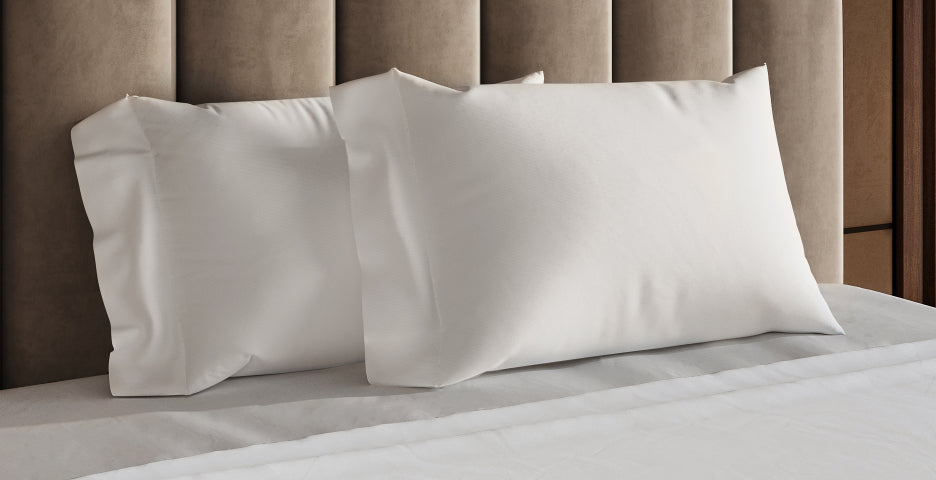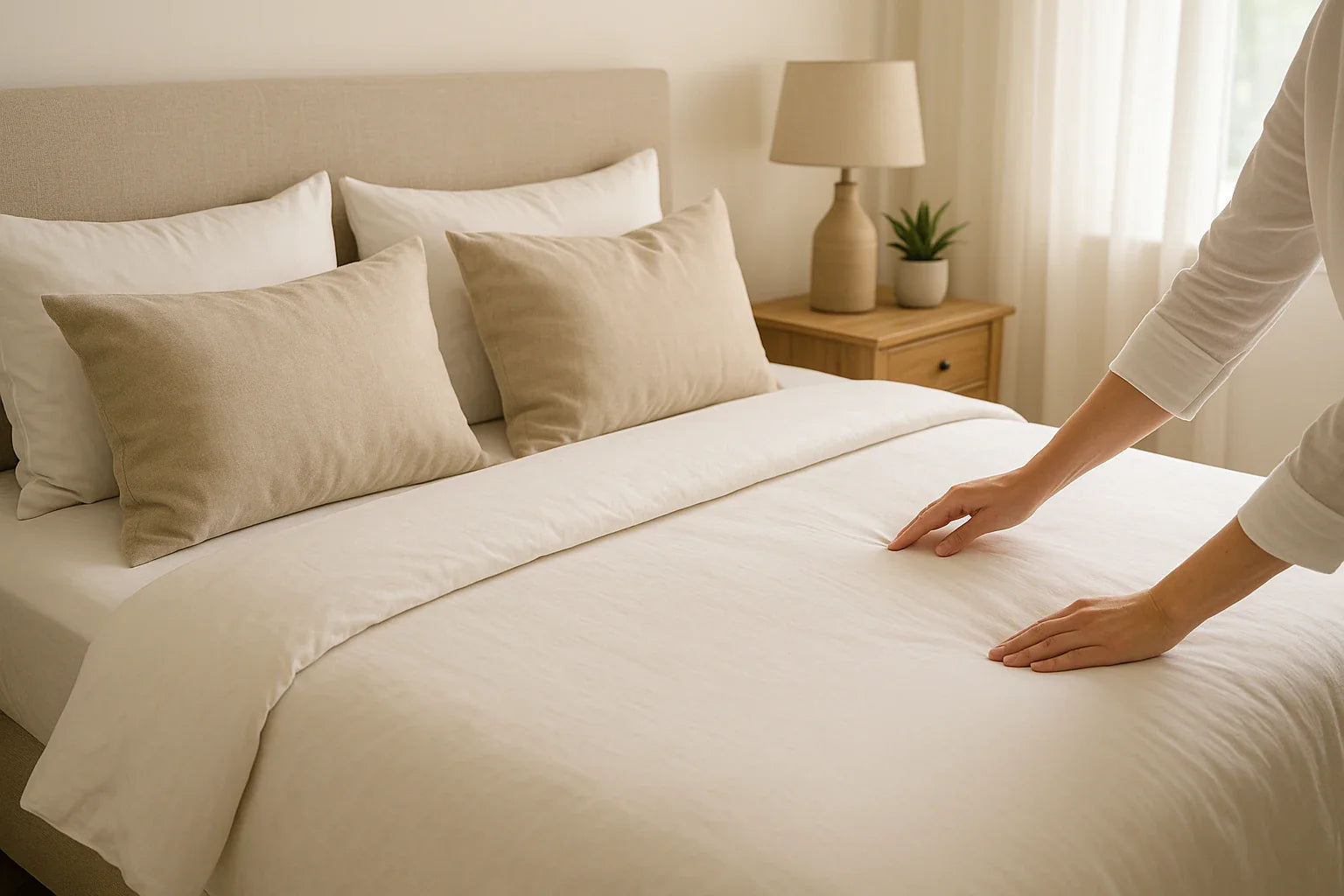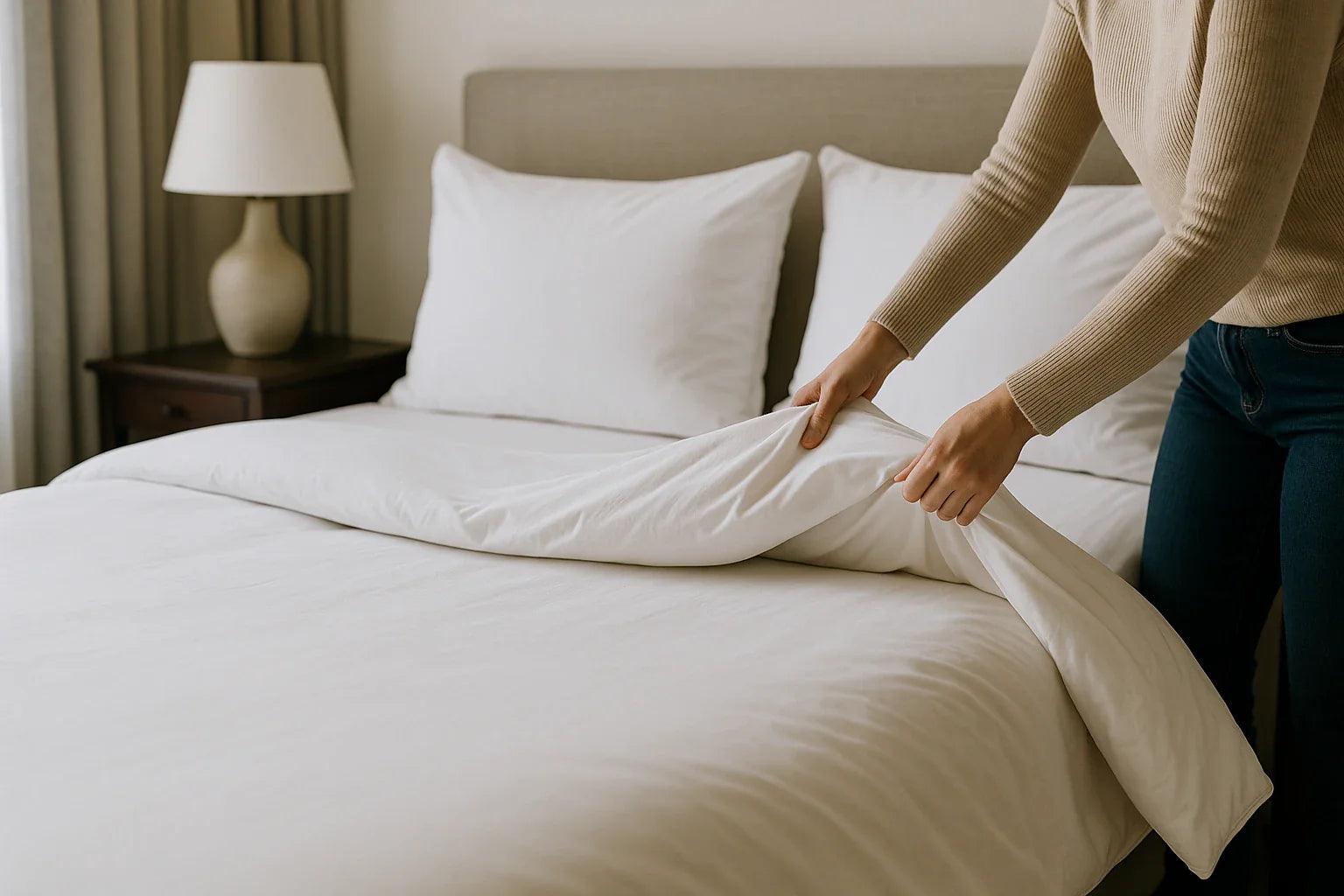Key Takeaways
- Drying a comforter can be done effectively in a dryer or by air drying, but it’s important to use low heat and dryer balls for even drying and fluffiness.
- Knowing the right settings and temperature for drying ensures that your comforter stays soft and damage-free.
- Patience is key; most comforters take around 2-3 hours to dry fully, so frequent checks are essential to prevent overheating.
Keeping a comforter clean and well-maintained can make all the difference in your sleep quality.
Whether you’re drying it after a wash or a spill, knowing the proper techniques will help ensure it comes out fluffy, evenly dried, and damage-free.
Can You Dry a Comforter?
Yes, But Take Precautions
Yes, you can dry a comforter, but doing so requires specific settings to avoid damaging the fabric or clumping the fill. Comforters can be bulky, so making sure your dryer has the capacity to handle it is crucial. Using the right heat setting and a few dryer balls can make a big difference in keeping your comforter fluffy.
Precautions for Dryer Use
- Low Heat Only: High heat can harm both down and synthetic materials, causing them to lose their loft and structure.
- Dryer Balls or Tennis Balls: These items bounce around, breaking up clumps of fill and promoting even drying.
- Frequent Monitoring: Check every 30 minutes to ensure the comforter is drying evenly and not overheating.
For a sleep experience as cozy as your comforter, consider Puffy mattresses, which pair beautifully with a well-maintained comforter for a clean, comfortable night’s sleep.
How to Dry a Comforter: Step-by-Step Guide
Step 1: Prepare the Comforter for Drying
Before placing your comforter in the dryer, shake it out to distribute the filling evenly. Spot-treat any lingering stains, and check for care label instructions regarding drying specifics. Ensuring your comforter is in good shape before drying helps avoid further complications.
Step 2: Choose the Right Dryer Settings
Proper dryer settings are essential to protect your comforter’s quality.
- Low or Medium Heat: Most comforters can tolerate low to medium heat settings; anything higher may damage the filling.
- Delicate Cycle: This cycle provides a gentler drying process, reducing wear on both fabric and filling.
Step 3: Add Dryer Balls
Adding a few dryer balls or clean tennis balls will help to keep the filling evenly spread, preventing clumps. This process allows for consistent airflow, which aids in drying and fluffiness.
Step 4: Monitor and Fluff
Regular checks, ideally every 30 minutes, help prevent overheating and ensure even drying. Take the comforter out, shake it gently, and place it back in the dryer to keep it from clumping.
What Setting to Dry Comforter?
Recommended Settings for Best Results
| Dryer Setting | Recommended Temperature | Duration |
|---|---|---|
| Low Heat | Around 100°F | 2-3 hours |
| Medium Heat | Around 120°F | 1.5-2 hours |
| Air Fluff | No heat | 3-4 hours, depending on size |
These settings are gentle enough to prevent potential damage while still drying the comforter thoroughly. Higher temperatures may cause synthetic fills to melt or shrink, which impacts the comforter’s overall performance.
What Temperature to Dry Comforter?
The Ideal Range for Comforter Drying
The recommended temperature for drying comforters typically ranges between 100°F and 120°F. Using higher temperatures can damage the delicate filling and fabric, leading to a reduced lifespan for your comforter.
Special Considerations for Down and Synthetic Fill
- Down Comforters: These require a lower heat setting to maintain loft.
- Synthetic Fill: This can usually withstand a medium heat setting but should still be monitored closely.
With a breathable Puffy Lux Mattress beneath your comforter, maintaining the right temperature and fluffiness adds to your sleep comfort, ensuring a cozy yet cool environment every night.
How Long Does It Take to Dry a Comforter?
General Drying Times
The time to dry a comforter will vary depending on the type of filling and the dryer’s capacity. Generally:
- Down Comforters: Around 2-3 hours on low heat.
- Synthetic Comforters: Approximately 1.5-2 hours on medium heat.
- Air-Dried Comforters: This process can take a day or more, depending on humidity levels and air circulation.
Factors That Affect Drying Time
- Filling Material: Down takes longer to dry than synthetic materials.
- Dryer Size and Efficiency: A larger capacity dryer can handle a comforter more effectively.
- Humidity Levels: Higher humidity will extend drying times, especially if air drying.
How to Air Dry a Comforter as an Alternative
Air drying can be a fantastic alternative, especially if you have space to hang the comforter outdoors or on a drying rack. The process might take longer but minimizes the risk of overheating or damage.
Tips for Effective Air Drying
- Hang It Up Properly: Spread the comforter out over a railing or drying rack to maximize airflow.
- Rotate and Fluff: Move the comforter around every few hours to ensure even drying.
- Time and Patience: Depending on the weather, this process may take up to a full day or more.
Why Use Dryer Balls When Drying a Comforter?
The Role of Dryer Balls in Comforter Maintenance
Dryer balls not only help distribute the filling evenly but also aid in reducing drying time by allowing better air circulation within the dryer. Dryer balls are an inexpensive and highly effective way to keep your comforter looking and feeling its best.
- Prevents Clumping: The main benefit of dryer balls is to keep the filling spread evenly.
- Reduces Static: Natural wool dryer balls, in particular, can reduce static cling.
Common Drying Mistakes to Avoid
To protect your comforter and extend its life, avoid these common mistakes:
- Overusing Heat: Higher temperatures may cause shrinkage or damage.
- Skipping Regular Checks: Failing to check on your comforter during drying can lead to overheating or uneven drying.
- Skipping Dryer Balls: These help immensely in keeping the comforter’s filling well-distributed and fluffy.
How Often Should You Dry Clean Your Comforter?
To keep your comforter fresh without unnecessary wear, dry cleaning once a year is often sufficient. Over-cleaning can reduce the comforter’s life, but using a duvet cover minimizes the frequency of needing a deep clean.
Conclusion
Drying a comforter properly takes time and care, but the results are well worth it.
From selecting the correct settings to using dryer balls and understanding drying times, following these steps ensures that your comforter stays in top shape.
Whether you’re freshening up a well-loved comforter or drying it after a wash, these tips will help maintain its quality and comfort.
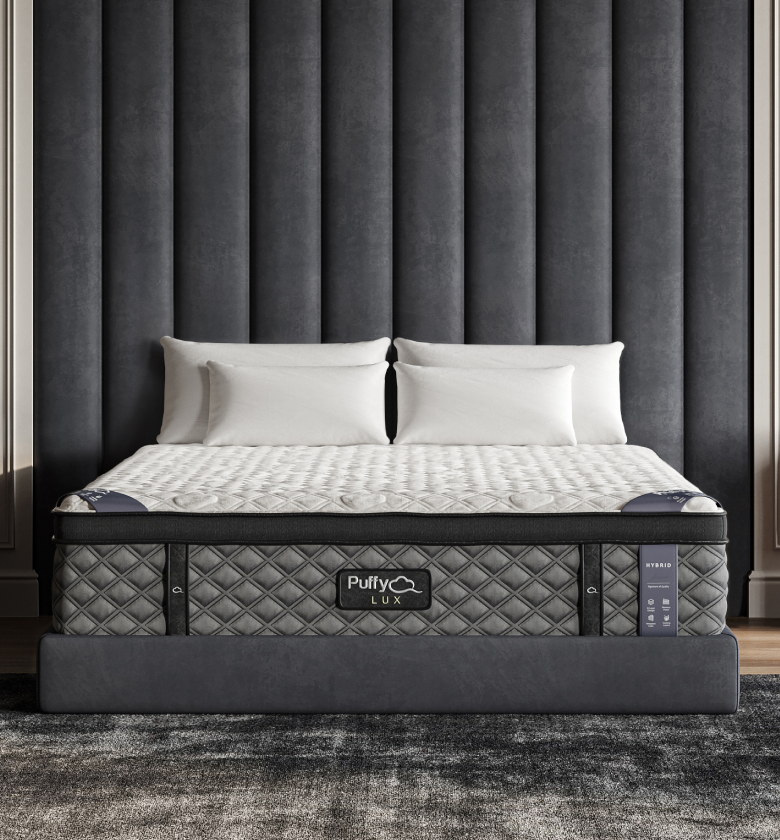
$1,350 in savings
Transform your comfort with the Puffy Lux.
Relax into award-winning comfort with this hybrid mattress:
- 8 layers of cloudlike luxury.
- Medium-plush feel.
- Gel-infused cooling.
- 101-night sleep trial.
